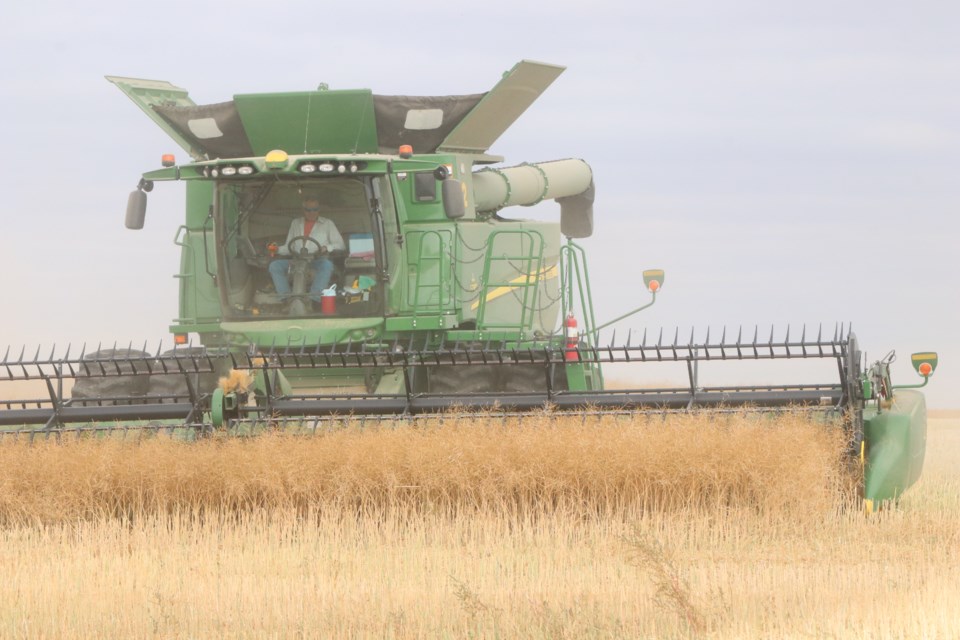WEYBURN - Warm, dry conditions helped crop development and haying progress quickly in the southeast this past week, according to the crop report for the period of July 4 to July 10. Many producers hope for rain soon to maintain crop conditions.
Many areas of the southeast reported only trace amounts of rain and the most rainfall reported was five mm in the Avonlea area. Soil moisture has diminished. Cropland in the southeast is 21 per cent adequate for soil moisture, 65 per cent short and 14 per cent very short. Hay and pasture land is 17 per cent adequate for soil moisture, 62 per cent short and 22 per cent very short.
The majority of crops are at normal stages of development for this time of year. Fall cereals are the most advanced, with 28 per cent of this year’s crop ahead of normal stages of development. Oilseeds are the most behind, with 19 per cent of the crop behind normal stages of development. Crop conditions in the southeast are generally good, partially due to the excess moisture received this spring. Peas and lentils are in the best condition in the region, with 20 per cent of peas in excellent condition and 49 per cent in good condition. Fifteen per cent of lentils are in excellent condition and 59 per cent are in good condition. Currently, winter wheat, fall rye, spring wheat and durum are in the poorest condition with 10 to14 per cent of the crop in poor condition.
Producers have made great haying progress this week. Fifty per cent of the first cut of hay has been baled or silaged, while 23 per cent is cut and 27 per cent is still standing. The first cut of hay is good quality hay.
Crop damage this week is primarily due to heat stress and dry conditions, while grasshoppers remain the primary insect pest. Producers are scouting their fields for pests while many are working cattle and haying.




